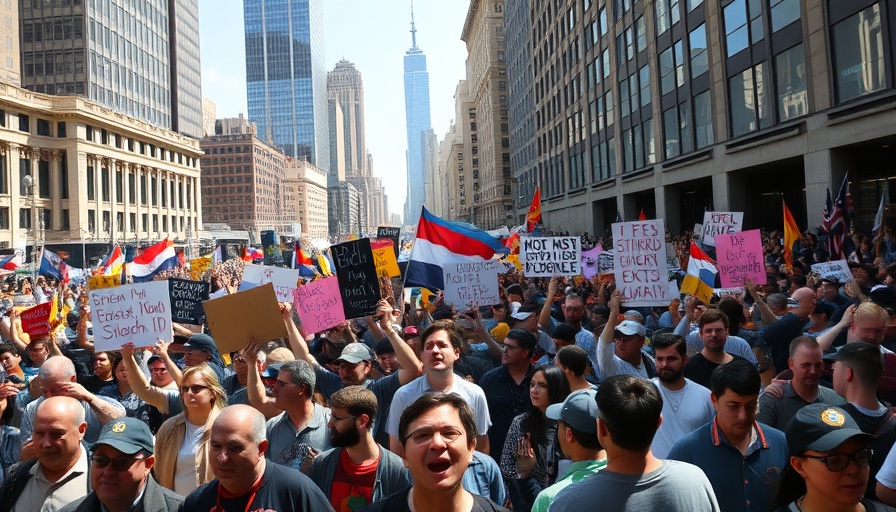
Background of the Protests: A Reflection on Immigration Policies
For four consecutive days, Los Angeles has seen passionate protests against Immigration and Customs Enforcement (ICE), highlighting deeply rooted frustrations regarding U.S. immigration policies. The protests began in reaction to what many see as harsh enforcement tactics that disproportionately affect immigrant communities, particularly undocumented individuals and their families. As activists carry signs demanding the abolition of ICE, they stress that these policies contribute to family separations and a cycle of trauma that impacts entire communities.
Community Voices: Why This Issue Matters
Among the diverse group of demonstrators, stories of families torn apart due to deportation resonate the most. Participants include legal immigrants who support their undocumented friends and neighbors. They argue that a society that fails to protect its most vulnerable members is one that undermines its values and principles. "We’re not just protesting; we’re standing up for our family members, friends, and community," stated one protester, underscoring the personal stakes underlying this movement.
Media Coverage & Its Role in Shaping Perspectives
The media has been pivotal in shaping public perception of immigration issues. Coverage of the Los Angeles protests showcases a broader national concern over immigration policy. The Wall Street Journal and various other outlets have highlighted the scale of discontent among the residents, but the portrayal can vary significantly. This divergence raises questions about which narratives gain traction and which voices might go unheard. An analysis of news coverage reveals that while some sources emphasize the protests’ intensity, others frame them within a context of law and order, contributing to a polarized discussion.
Counterarguments and Diverse Perspectives
While many argue against ICE operations, there are voices advocating for the enforcement of immigration laws, highlighting the need for security and legality within the immigration system. Supporters of tighter immigration measures often cite concerns over crime and economic stability, arguing that illegal immigration strains public resources. This dichotomy leads to a complex national dialogue on balancing compassion with enforcement, revealing that the conversation around ICE involves layers of debate beyond mere policy decisions.
Future Predictions: Where Do We Go From Here?
The trajectory of these protests could spark broader reform discussions on immigration policies. As public sentiment continues to shift, advocates hope their sustained efforts will lead to a reevaluation of ICE's role in our society. Futurists in the immigration reform community predict that meaningful conversations could emerge in legislative circles, potentially resulting in more humane and community-focused policy reforms aimed at addressing the root causes of migration rather than punitive measures.
Engaging With the Community: What Can You Do?
For those interested in supporting immigrant rights, local organizations often seek volunteers for outreach, education, or assistance programs aimed at helping affected families navigate the immigration system. Engaging with community initiatives, attending town hall meetings, or simply educating oneself about the nuances of immigration law can lead to a more informed populace. This is essential for fostering a community that values inclusivity and social justice.
As the protests continue to unfold, it is vital for individuals to connect with the stories behind the banners and slogans. Understanding the human aspect of these protests not only encourages empathy but also empowers action.
In a landscape defined by division, it's crucial that we consider how we can work towards unity and reform in a way that acknowledges the dignity of all individuals. Will you join the conversation and choose to engage, educate, and advocate for change within your community?
 Add Row
Add Row  Add
Add 




Write A Comment